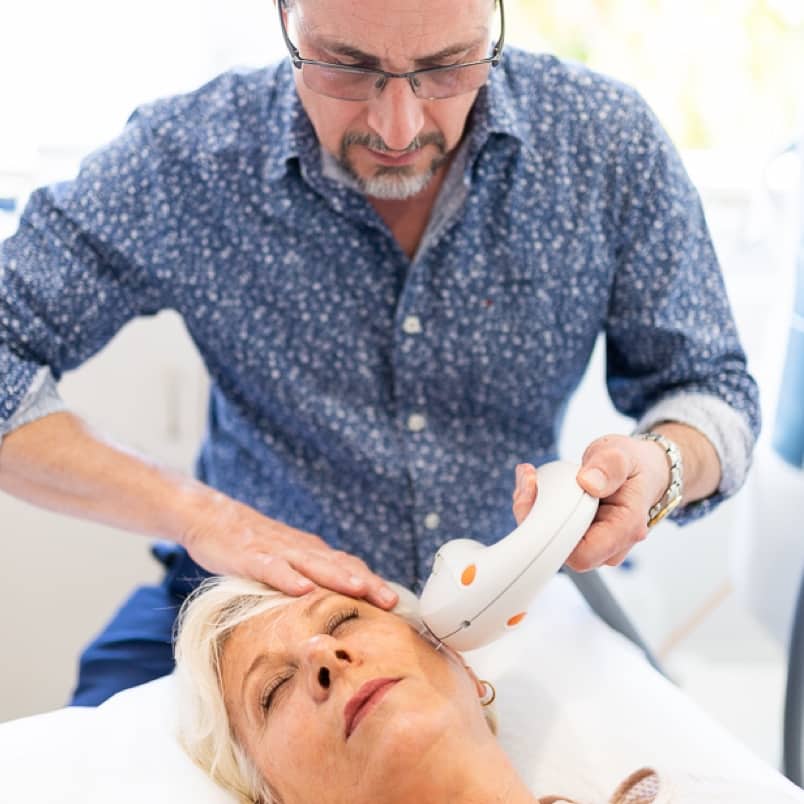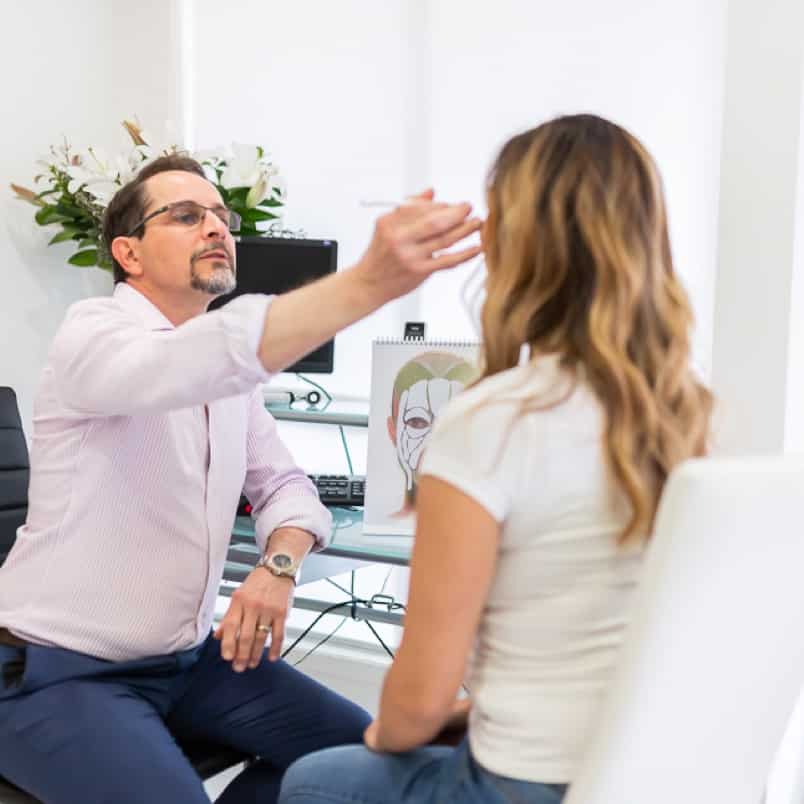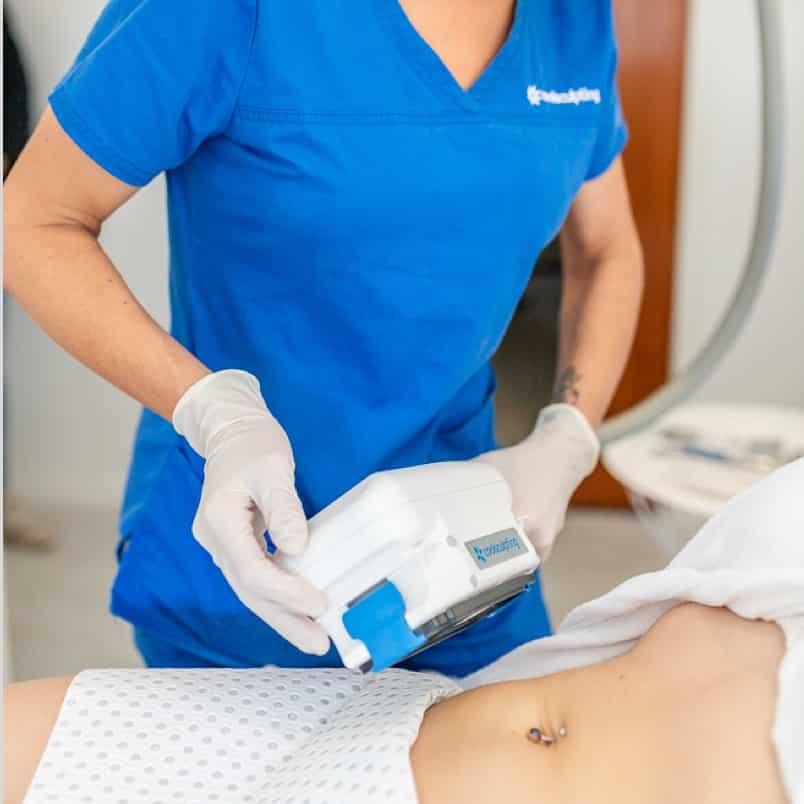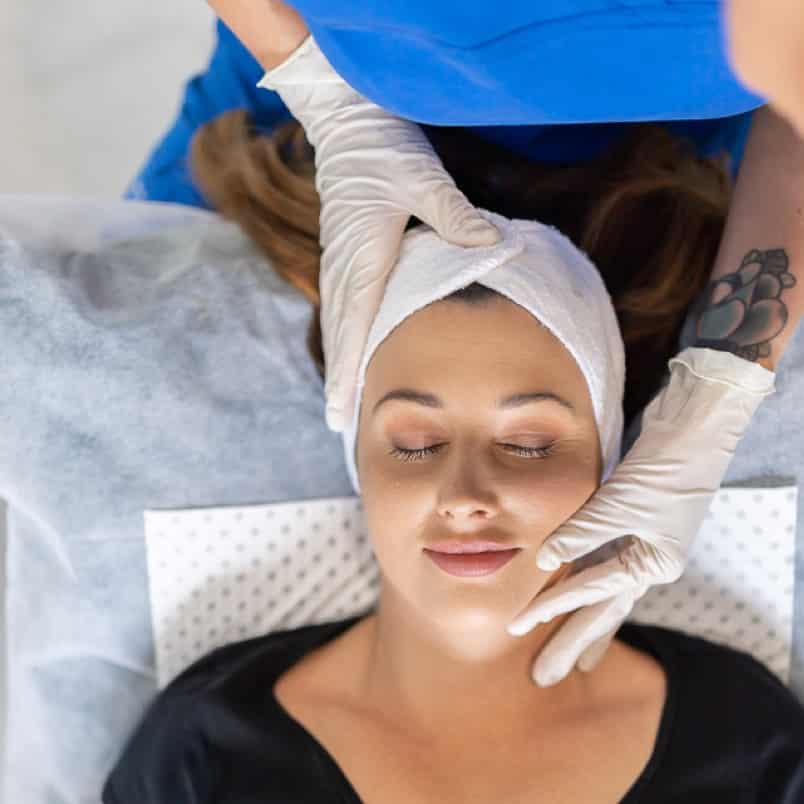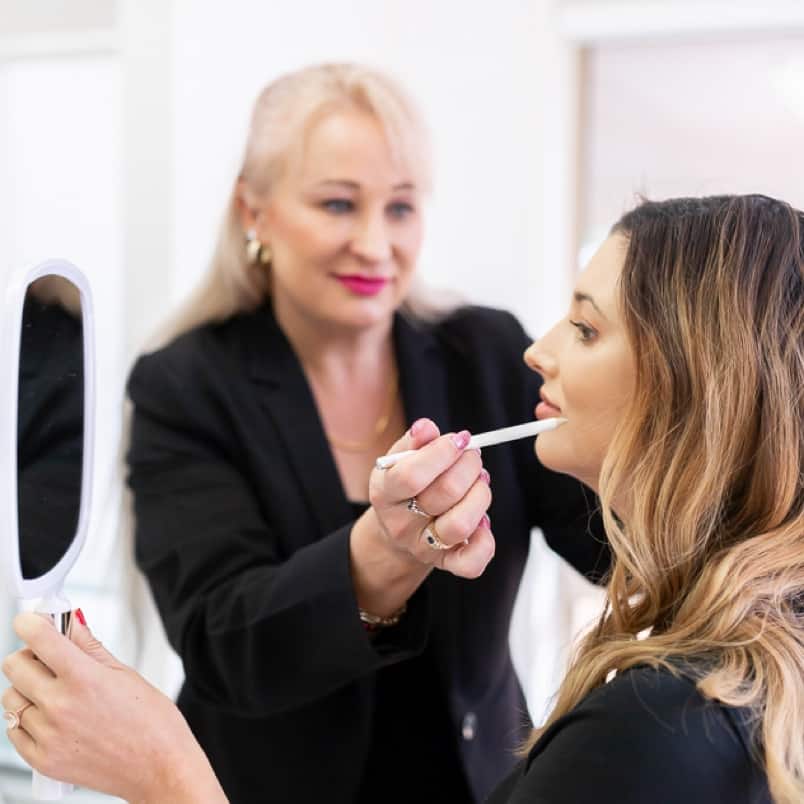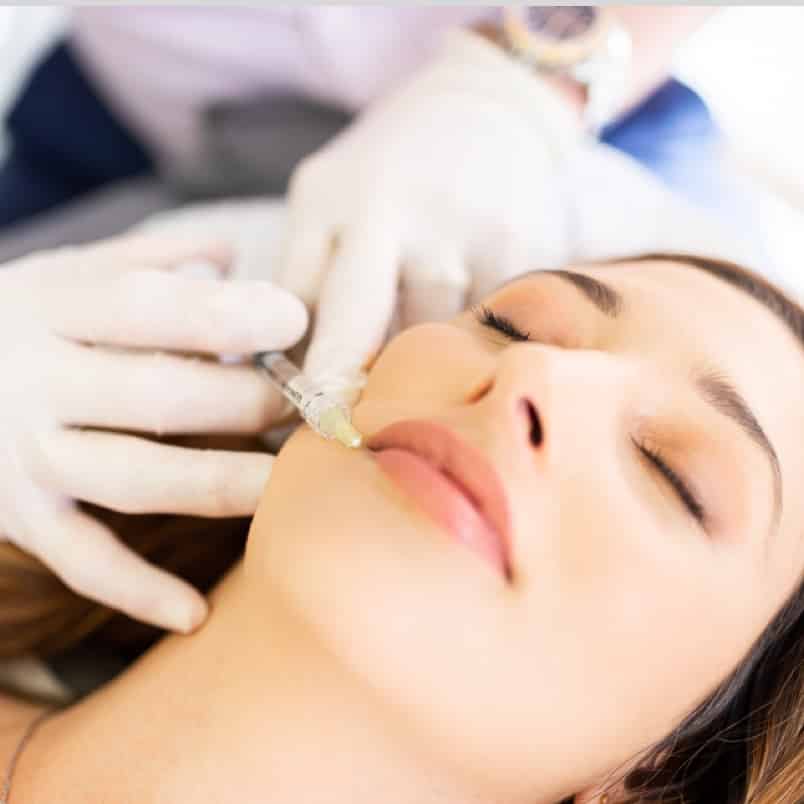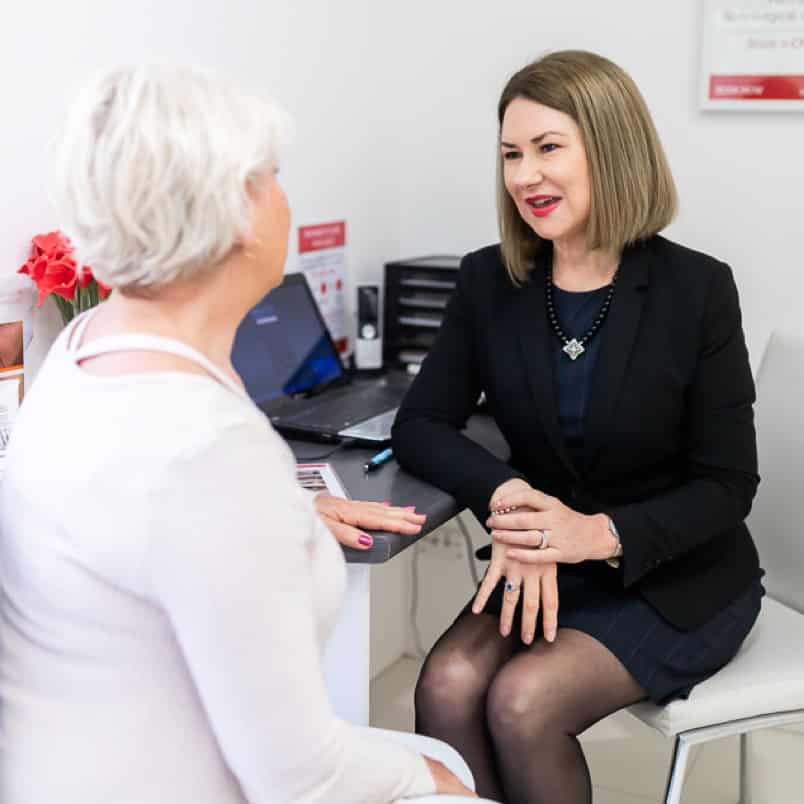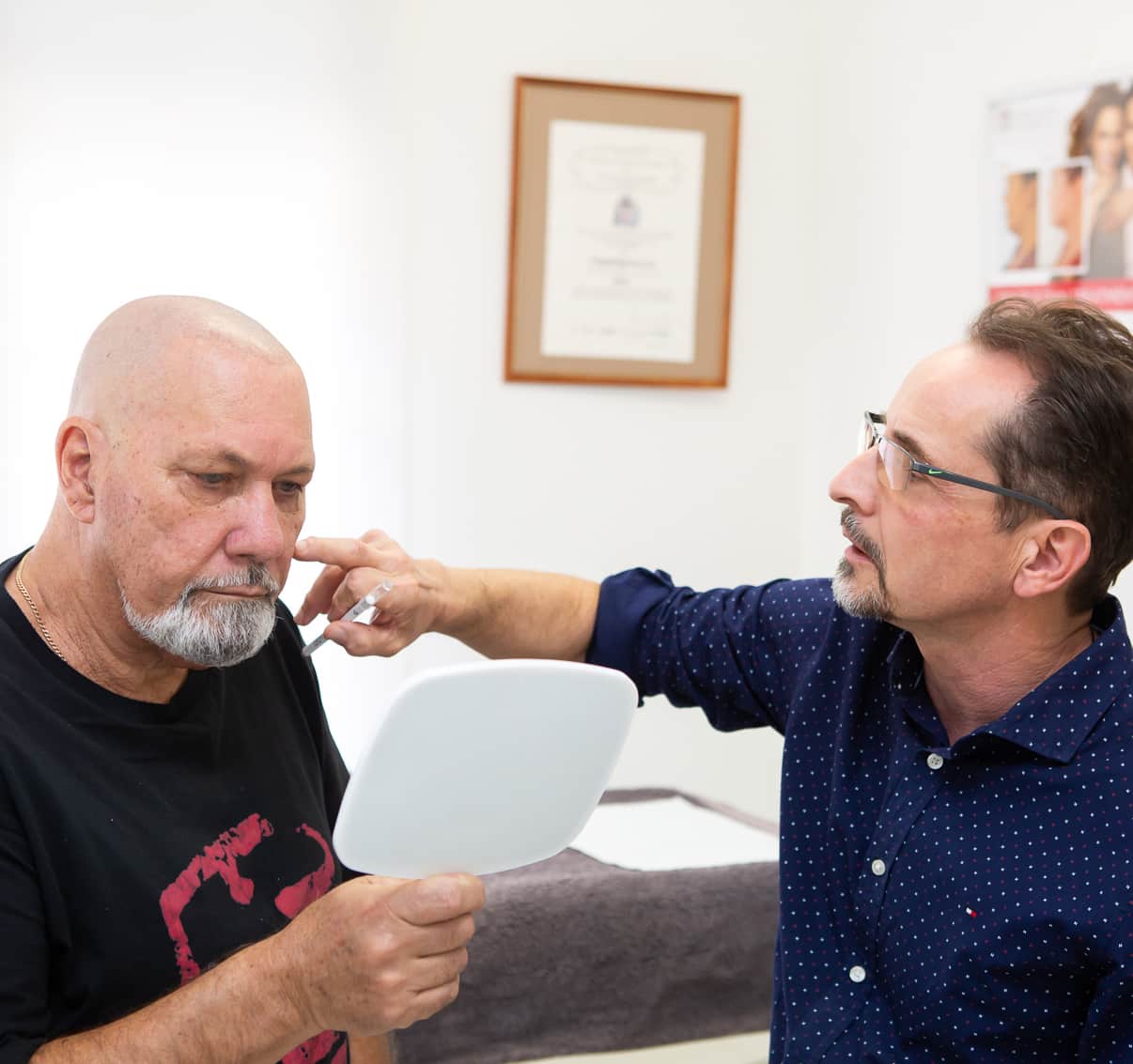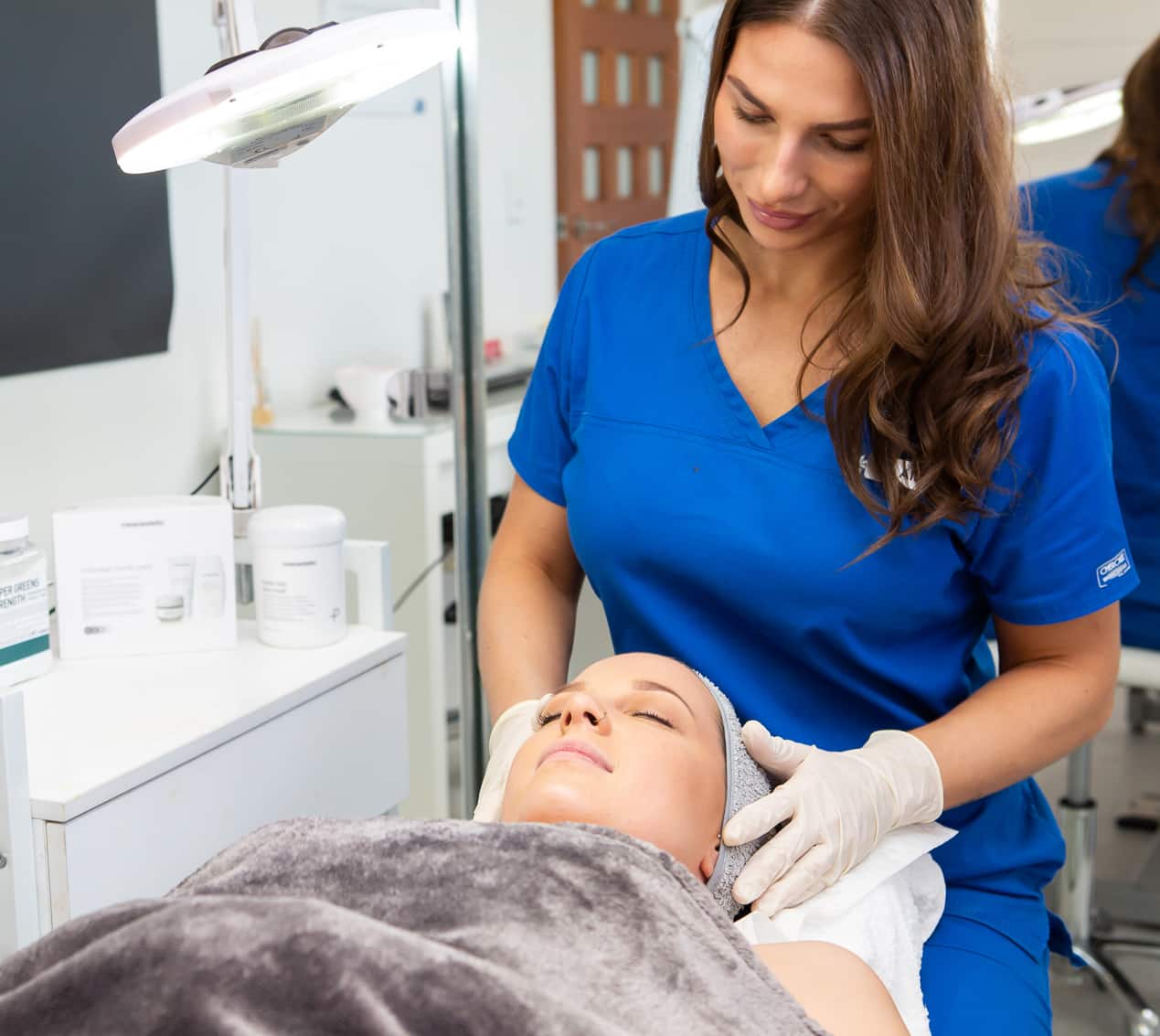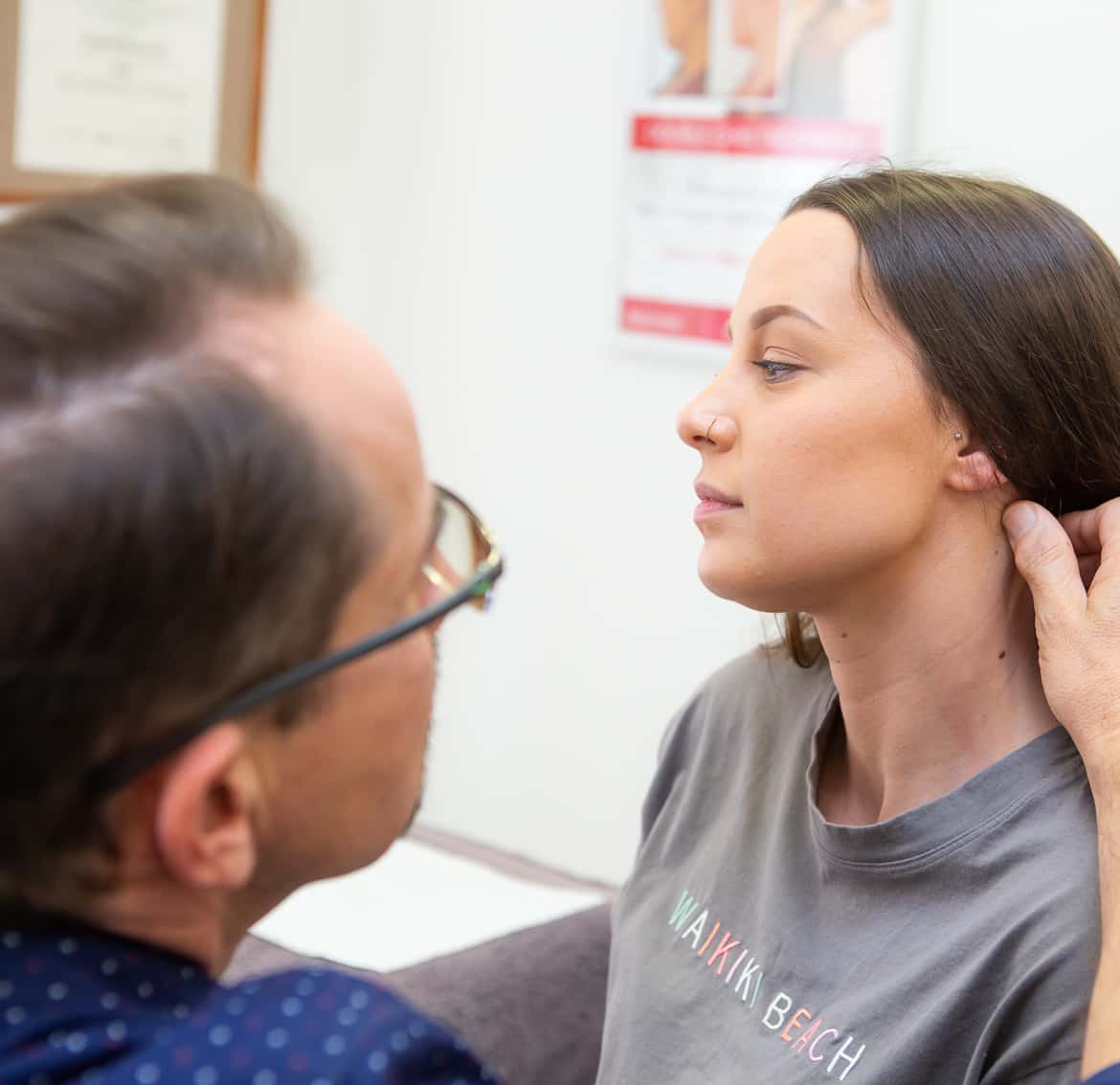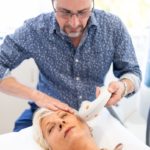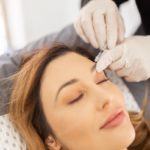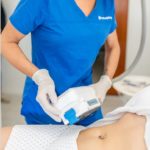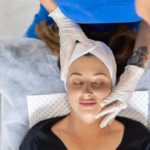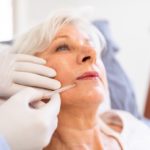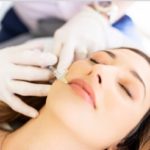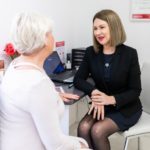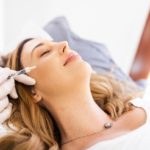IPL treatment for pigment, sun-damage & rosacea
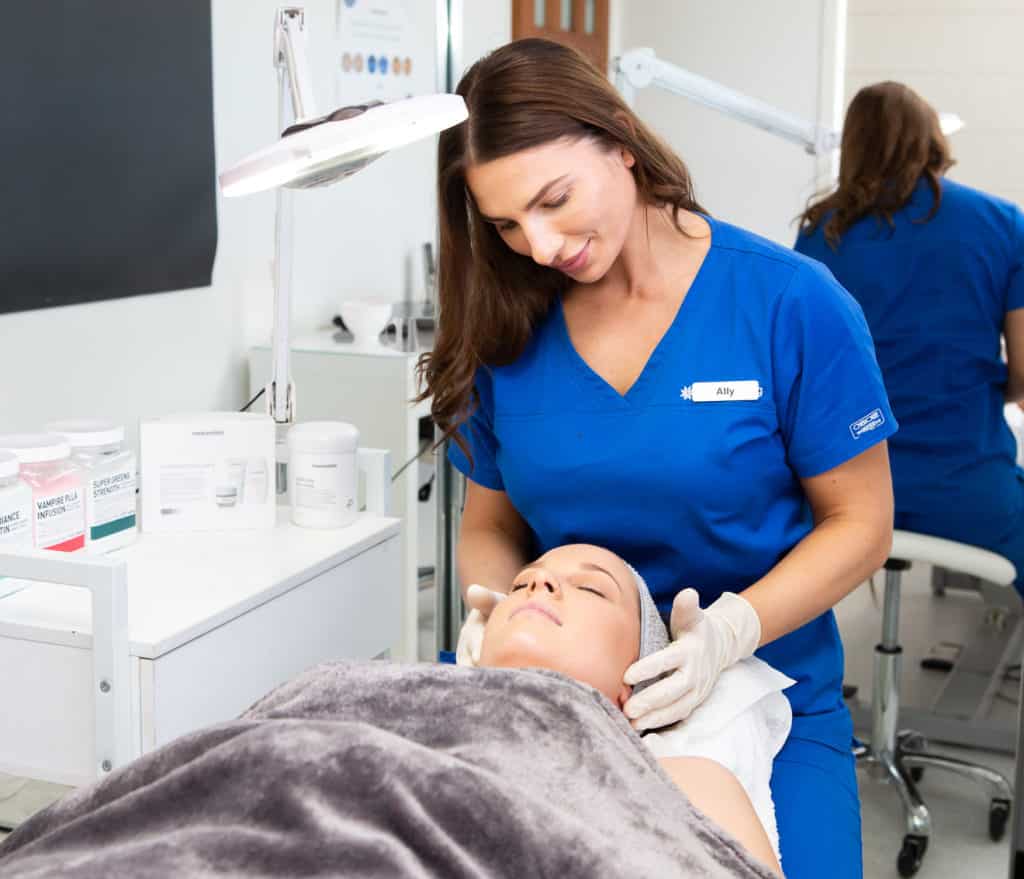
IPL Treatment Overview
What is IPL?
IPL stands for Intense Pulsed Light.
IPL is not a Laser, but works in a similar way to many lasers. IPL utilises bright shots of light, passed through filters to limit the wavelengths, flashed into the skin for a beneficial effect.
Treatments can be varied depending on the filters used, intensity of the flashes, number and duration of flashes and other factors.
IPL can be very effective for treating freckles and most sun-damage, spider veins (but not on the legs), redness, flushing, rosacea, and some vascular birth marks.
It can also be an effective permanent or semi-permanent hair removal treatment, working in the same way as hair removal lasers.
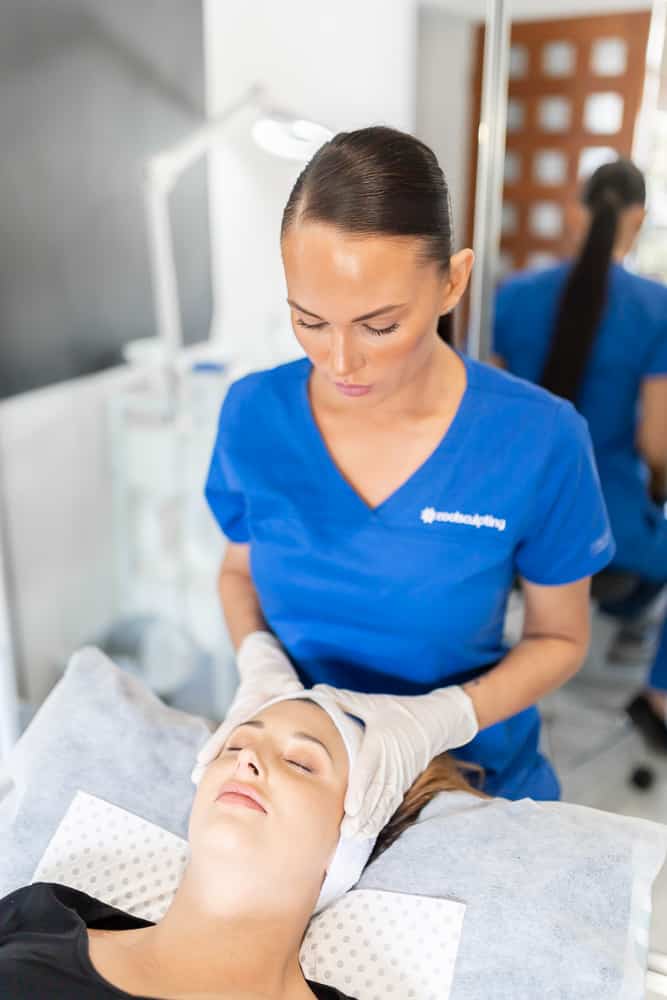
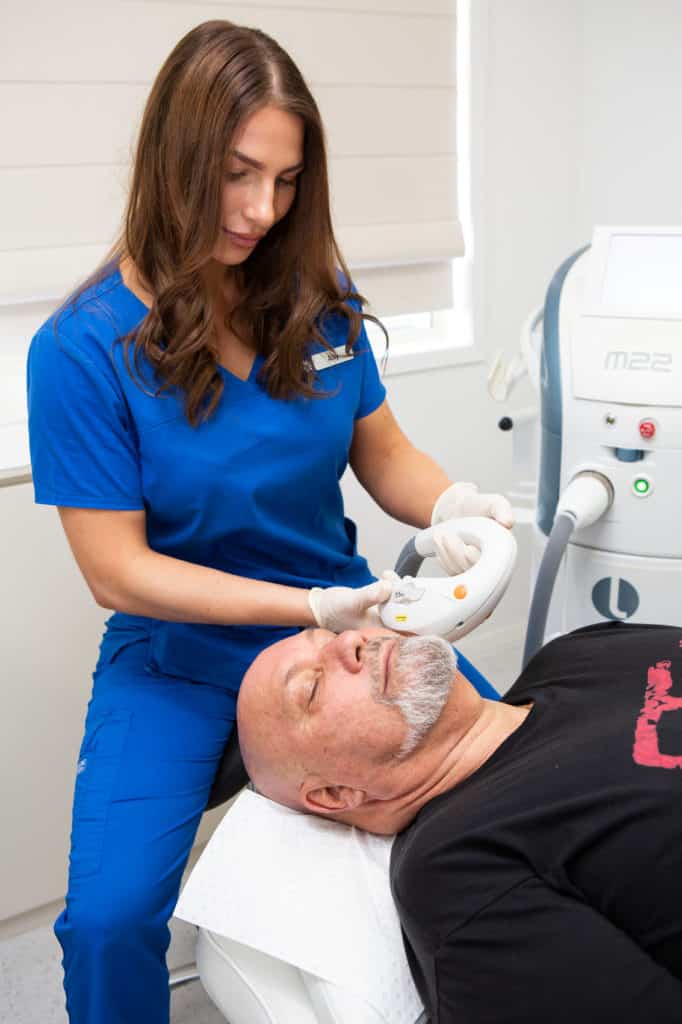
What is BBL?
What is the difference between IPL and BBL?
BBL stands for Broad Band Light. BBL is a particular brand of IPL made by Sciton in America. Having used IPL continuously for nearly 30 years, we think of BBL as the “Rolls Royce” of IPL devices.
BBL has specific modes of use that are not available on other IPL devices which allow for rapid firing of lower energy pulses.
Termed “Forever Young” this mode allows for large areas to be treated quickly and extremely safely. It essentially eliminated the risk of uneven results and “stripes” and burn spots sometimes seen with other devices.
Forever Young is especially suitable for large areas of the body such as chests, arms and legs.
This rapid fire mode can also be used for large area hair removal when it is termed “Forever Clear”
Mole removal services, hair loss treatments, migraine treatments and a wide array of other services are also available at our clinic.
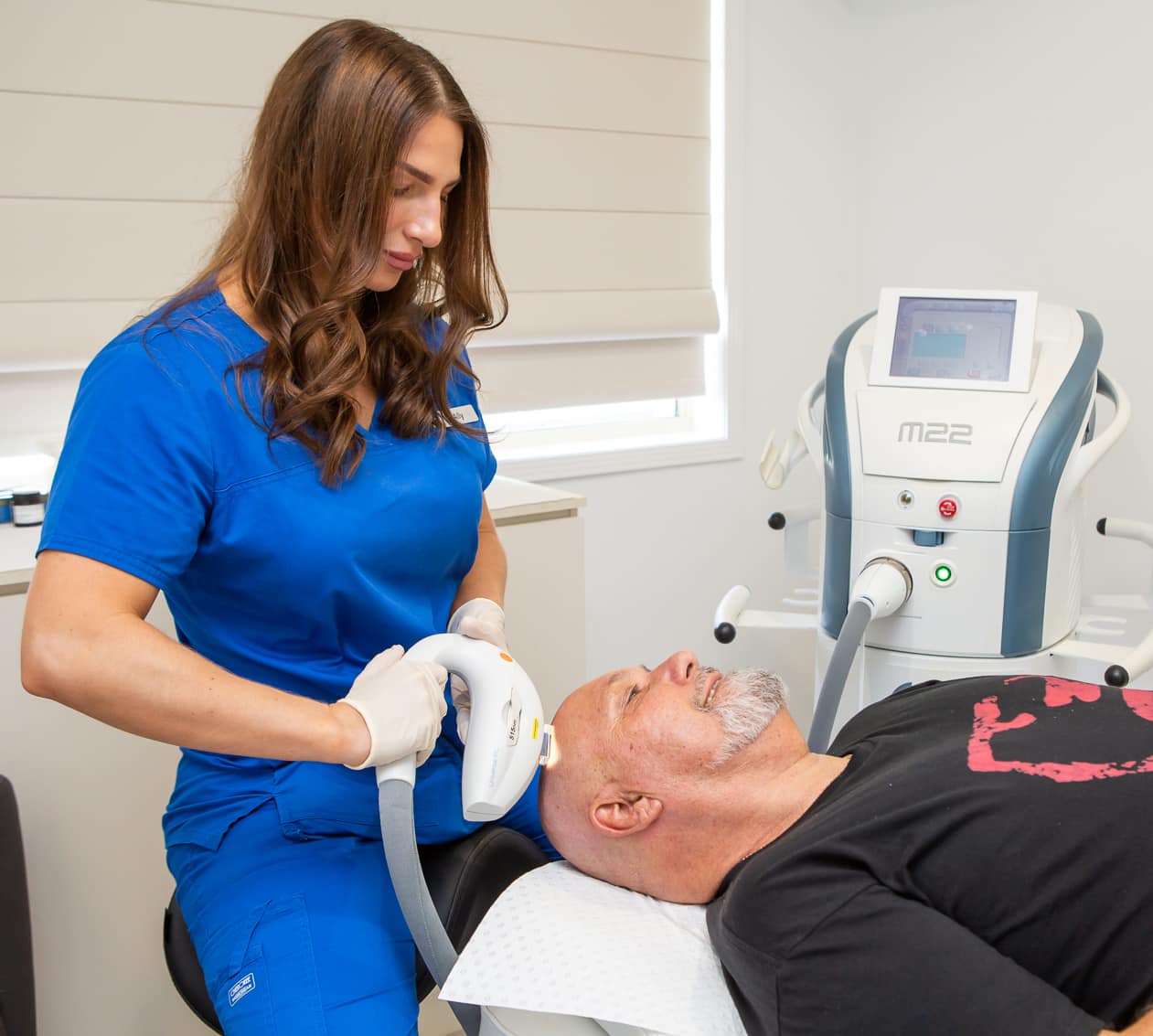
What Can IPL/BBL treat?
BBL is highly effective for freckles, sun-damage, uneven skin tone, redness, Rosacea, broken capillaries angiomas and spider vessels. With different settings it is also a quick, painless treatment for permanent hair reduction.
BBL can also be used for acne and to improve skin tone and texture.
BBL is beneficial to the skin, and studies show a reduction in age related changes and even in skin cancer
What are treatments like?
With BBL generally no topical anesthetic is needed. Glasses or goggles are usually worn although, unlike Laser, there is generally no danger from IPL to the eyes. Depending on the area treated and the type of treatment performed BBL can feel like a hot prickling sensation up to a small stinging sensation.
After treatment there is generally some flushing or redness which fades over a few hours to a few days. Pigmentation often darkens a little. Full results take 4-6 weeks and make up can be worn from the next day.
How many treatments are needed?
This varies depending on what is being treated and individual factors. Generally freckles and pigment fade with 1-2 treatments, redness and vessels may take 2-4 treatments.
Why BBL at Envisage?
Dr Leat and Envisage Clinic have more experience with IPL treatments than anyone in Queensland and probably Australia. Dr Leat started using IPL with the very first IPL device installed in Australia in around 1994.
There are a huge number of IPL devices available.
Most cost less than a tenth of the price of the Sciton BBL. Sciton BBL is the most expensive BBL available in Australia, but it does provide un-paralleled safety and flexibility.
General Questions
IPL and laser are both light based treatments. Each laser uses only one or two wavelengths of light, whilst IPL uses a broader band of wavelengths – which can be varied with filters. There are many types of lasers, each designed to treat a different problem – such as tattoo and hair removal, pigment issues, blood vessel problems. Some are implemented to “ablate” or burn the skin.
There is no one treatment that is ideal for every problem in every patient. However, I find that IPL is the most versatile, treating a variety of skin concerns with usually little or no downtime.
Generally, IPL is very beneficial for the skin and does not damage it. In fact, it can result in some increase in collagen production and an improvement in texture and fine lines. It is safe to perform multiple IPL treatments, and many patients like to do 1 or 2 a year for maintenance.
If IPL is performed too strongly, it can cause blisters and burns. Like all light and heat-based treatments, IPL can cause darker skin types to make more pigment – termed post-inflammatory pigmentation. For this reason, IPL should be performed very carefully, usually after prescription skin care is applied for preparation purposes.
At our medical clinic, we usually use a powerful anaesthetic cream before treatment. This generally makes the process very comfortable, with only a slight heat or stinging sensation for most patients. Most treatments take between 5 to 15 minutes, depending on the size. Afterwards there may be some redness like sunburn and sometimes some swelling, which is usually mild.
Very rarely, there is more significant swelling. Redness and swelling should last only between 1 and 4 days. Freckles and pigments usually darken before fading or flaking away after 7 days on the face, 2-3 weeks on other areas. You can put on makeup from the next day and most do not find that their everyday activities are limited to any significant extent.
At Envisage Clinic, we have a latest generation medical grade IPL (Lumenis M22) at our disposal. Because of this and our more than 24 years’ experience with IPL, we generally find that most freckle type pigment can be treated in only 1 to 2 sessions, although results vary individually. Redness, flushing, and rosacea usually need 2 to 6 treatments. Hair removal requires 4 to 6 treatments.
IPL will not treat moles or lesions that are raised (even slightly) above the skin surface. Larger freckle like lentigines (age or “liver spots) and “café au lait” birthmarks will often only lighten with IPL. Neither IPL nor most laser treatments are very effective at treating hormonal pigment (melasma) which is usually treated with prescription-based skin care.
Although IPL is effective for the removal of dark hairs, it is not very effective at treating very blonde, grey, or downy hair. IPL does not remove tattoos well and neither IPL nor laser treatments address leg veins as well as sclerotherapy (injection treatment) does.
Generally, you don’t have to. On the face, you will have to look after your skin with sun screen and sun sense for a couple of weeks after whatever time of year you do it by limiting sun exposure.
I wouldn’t suggest most do IPL just before a beach holiday, for example. You will probably want to look after your skin better for longer anyway.
IPL on the neck, chest and body does take 2 to 3 weeks to settle and look good afterwards, so you may want to treat these areas in the cooler months when you can wear higher neck lines and long sleeves, etc.
We do treat most skin colours with IPL. Light skin colours are certainly the easiest to treat.
Darker skins (Asian, South American, Mediterranean, etc.) can react differently and usually require a prescription skin “lightening” treatment to prepare it beforehand.
Very dark skins (African, Islander, Aboriginal, etc.) are often best treated with other therapies.
At Envisage clinic, Dr Leat has used IPL for probably longer than anyone in Australia – since about 1994. We have a medical grade IPL (BBL by Sciton) and we also use a prescription medical anaesthetic cream. Combined, this means we usually provide particularly effective yet relatively painless treatments.
For example, we usually only perform 1 or 2 treatments for freckle and sun damage pigment, whilst other clinics often insist on a series of 6 or more sessions. Many patients have been surprised at how good the results of a single IPL treatment can be after having little effect from multiple treatments elsewhere.
Dr Leat has years of experience in treating pigment problems and Rosacea. He often combines IPL with other medical grade skin care and therapies.

